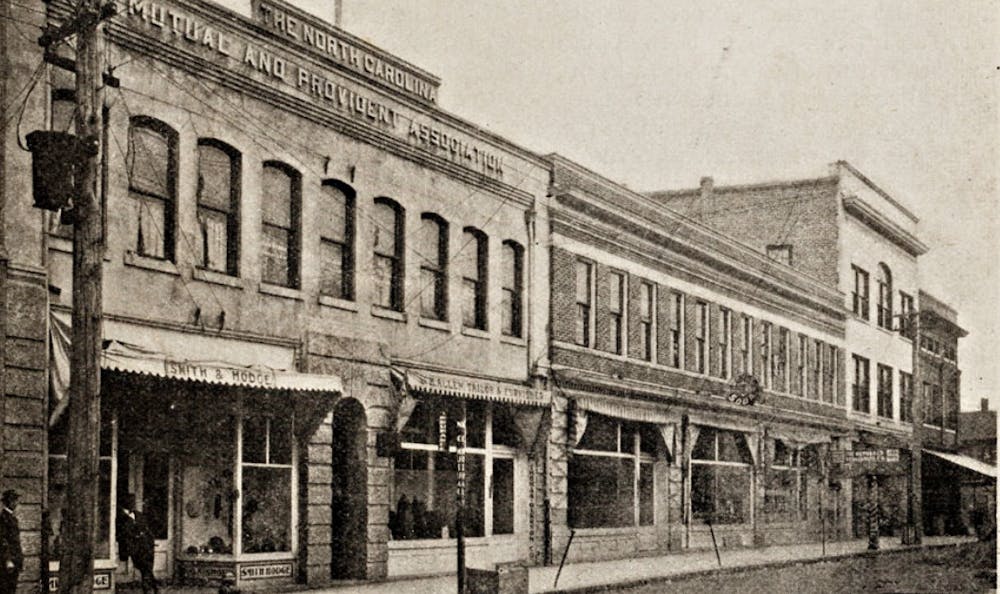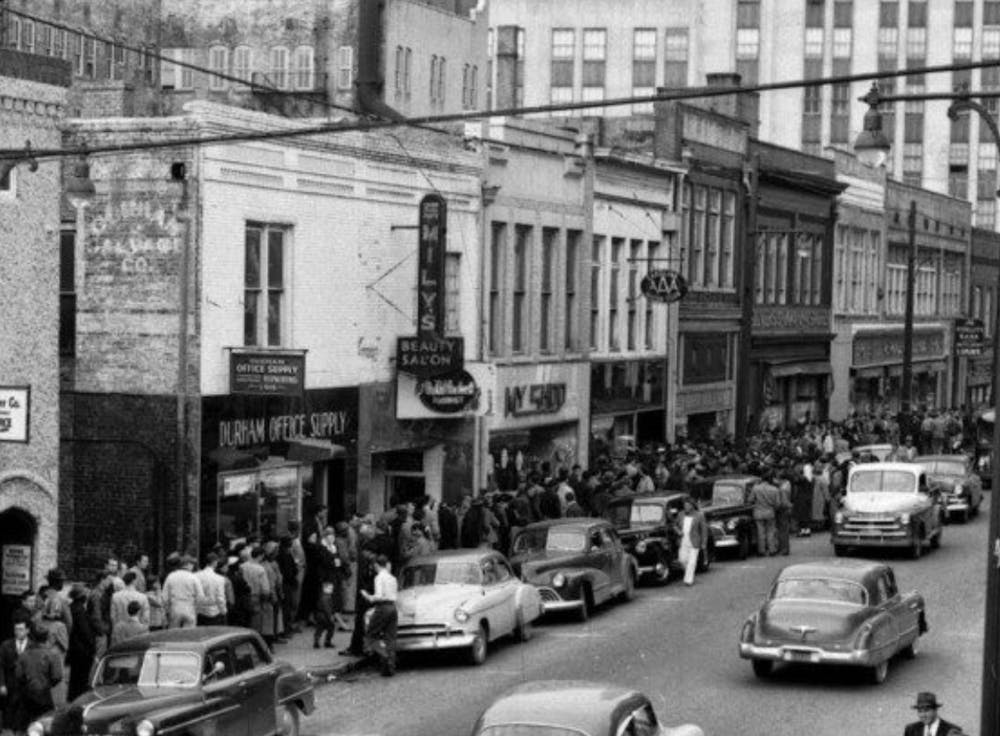The year is 1900, and it’s a typical afternoon on Durham’s “Black Wall Street.” Black families, couples and individuals are getting haircuts at local barbershops, putting down payments on their houses at North Carolina Mutual Life Insurance Company and running errands in the plethora of Black-owned stores that line the street.
During the late 1800s and early 1900s, Durham’s Black Wall Street housed a vibrant and successful variety of Black-owned businesses. A set of four blocks on Parrish Street, Black Wall Street served as a hub for Black Americans and was a thriving commercial area with tailors, barbers, drugstores and more. It put Durham on the map as the capital of the Black middle class in America, and the Bull City became nationally renowned for fostering Black entrepreneurship.
“Durham was known as the ‘mecca of the Black South’ because so much attention was paid to Durham’s economy,” said Paul Scott, founder of the Durham-based Black Messiah Movement and an activist who has worked to raise awareness about Black history in Durham.
Black Wall Street flourished during the Reconstruction era, at a time of racial tension and systematic discrimination against Black Americans.
The success of Black Wall Street was fueled by the efforts of two businesses that remain today: NC Mutual Life Insurance Company and Mechanics & Farmers Bank.
Today, NC Mutual Life Insurance Company is the largest Black-owned insurance business in the world. M&F Bank is the second oldest minority-owned bank in the United States and was also the first Black-owned bank in Durham.

During Black Wall Street’s peak, both of these firms provided loans and financial capital to Black people in Durham in a conscious effort to grow Black-owned businesses. Travis Rouse, senior vice president and chief sales and lending officer of M&F Bank, said that M&F extended loans to Black Durham residents when they couldn’t receive financing in white-owned institutions.
“[The bank] really was a main driver of economic growth in the Durham community,” Rouse said.
Black Wall Street also prospered due to its proximity to the Black neighborhood of Hayti, where a number of other Black-owned businesses thrived.
“Most people, when they talk about Durham’s Black Wall Street, they only talk about the financial district, the businesses, but it was also what we call the Hayti community. ... It was literally a community that helped the business sector to thrive and survive,” said Jim Harper, chair and professor of history at North Carolina Central University.
As Black Wall Street expanded and the number of successful Black-owned businesses grew, Durham’s business leaders and financial institutions invested in the community, according to an online exhibit by the Samuel DuBois Cook Center on Social Equity. These successful business owners collaborated with wealthy white people within the community, including the Duke family, to build schools, hospitals and churches.
According to Scott, Black-owned businesses in Durham focused on achieving equality and racial justice through economic advancement. In other areas of the South, Black communities were focused on more radical means of fighting for justice, such as Black pride movements. In Durham, however, many felt there was a compromise.
“The compromise was, you can have the money, but you have to leave the culture at the door,” Scott said.
This tradeoff had consequences. The use of economics and money to gain agency at the sacrifice of cultural pride during the time of Durham’s Black Wall Street has contributed to an overall money-oriented mindset for Black youth in Durham today, according to Scott.
“You have a pop culture that has created a materialistic view … and making money is the endgame,” Scott said. “That was really the downside of Black Wall Street. You know, the children today don't lack knowledge of economics as much as they lack culture.”

Black Wall Street today
When desegregation began in the 1960s, many Black-owned businesses could not compete with their white counterparts. Urban Renewal, a federal government initiative to redevelop “blighted” or “slum” neighborhoods, led to the construction of Durham Freeway 147 in the 1970s. The highway, which ran directly through and destroyed the neighborhood of Hayti, severed Durham’s central Black business district, disrupting more than 100 Black businesses and displacing hundreds of Black families.
"Urban Renewal … was the nail in the coffin," Scott said.
Although the city government promised to rebuild the community following Urban Renewal, they never did.
“People lost generational wealth, they lost their homes. It was never given back,” Harper said.
Today, much of what used to be Black Wall Street has been redeveloped into hotels and apartments. But Durham’s Black Wall Street remains an important source of pride for the city.
“Durham’s Black Wall Street lets us know how unique we are. I think we still have a special space carved out here in Durham that's unlike most places across America, but particularly in the South,” Harper said.
Get The Chronicle straight to your inbox
Signup for our weekly newsletter. Cancel at any time.

Sana Pashankar is a Trinity senior and a staff reporter of The Chronicle's 118th volume.

